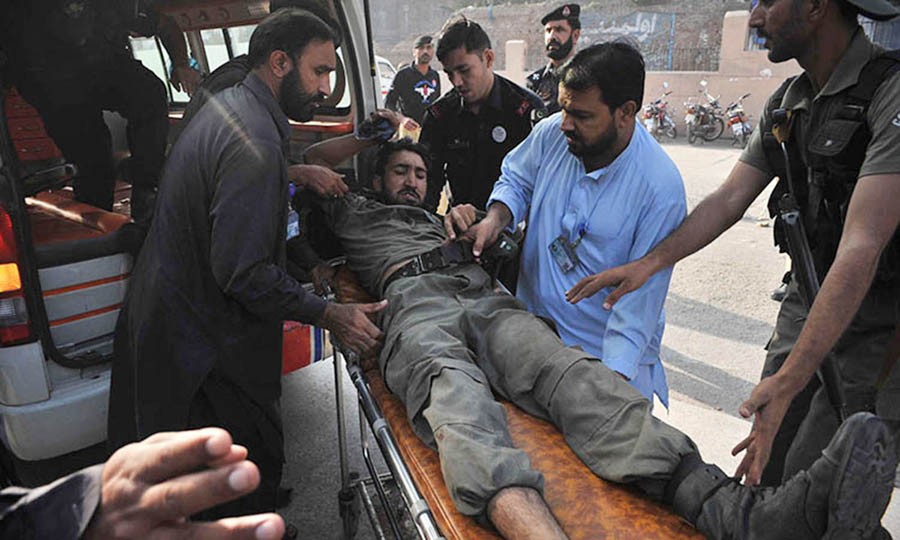
For the peace to come back to Afghanistan and Pakistan, the essential consensus required is to treat Taliban of all hues as a common enemy

In arming the anti-Soviet resistance, the world, led by the US, was creating a Frankenstein’s monster. It is now haunting us all. On December 1, the TTP-claimed deadly attack on Peshawar’s Agriculture Training Institute (ATI), killing nine people, including six students, has once again renewed the debate as to what stands responsible for the militants’ violence in the country. Before they struck ATI, Taliban, over the months, struck elsewhere too.
On November 9, TTP claimed credit for assassinating DIG Communication Balochistan, Hamid Shakeel Sabir. On November 15, SP Investigation Muhammad Ilyas was gunned down in the Quetta suburb of Nawa Killi. On July 10, District Police Officer Qilla Abdullah Sajid Mohmand was killed in a suicide attack, claimed by the TTP.
Two common threads run through all these grisly episodes of violence: either all of these attacks were claimed by the TTP or the terrorist entity was suspected and law enforcement agencies (LEAs) remained the exclusive target. The footage, shot by one of the attackers, of Peshawar’s ATI assault shows that the terrorists attacked the institute believing it to be an office of the Inter-Services Intelligence.
Post ATI attack, once again the debate as to what drives Taliban violence has surfaced. Political pundits believe that it is the narrow, literalist ideology of Deobandi-Wahabi combine that is the rationale behind Taliban violence in Pakistan. This position is untenable. It cannot answer the question as to why there was the absence of the ideology’s inspired organised form of violence in the country before 1979 generally and after 9/11 more specifically when subscribers, Taliban, to the ideology existed even then. Secondly, Taliban are not the only ones who subscribe to Deobandi and Wahabi ideologies. If it were for the reason of ideology to cause violence then why the teeming millions of Deobandis are peaceful despite the fact that they follow the same ideology as do the Taliban. Nonetheless, this does not mean that the ideology of Deobandi-Wahabi streak has no role in the militant violence. Quite contrary, Taliban violence is deeply entrenched in the said ideology.
The point that I make is that Islamist ideology did not engender Taliban violence in the first place. Rather events of the recent past, ranging from such regional factors, such as the Soviet invasion of Afghanistan, the resulting anti-Soviet resistance against the backdrop of Cold War and the Islamic revolution of the Shia persuasion in Iran and the attendant Saudi-Iran proxy war to national factors such as Zia’s Islamisation programme to Pakistan’s alleged support to Taliban in Afghanistan in the late 1990s, led to militant violence. On the other hand, Islamist ideology added fuel to the flames. It intensified violence engendered by factors other than ideology. Seen this way, we have been suffering not only from the fallout of past legacies but also from their continuity in one form or the other.
Post 9/11, the American presence in Afghanistan has close resemblance to the Soviets’ invasion of the country in December 1979. The US and Taliban have replaced the erstwhile Soviet Union and Mujahideen respectively. Pakistan and other regional states, such as Russia and Iran, have been allegedly engaging in extending support to Taliban, a role that was performed by more than two dozen countries that helped dislodge the Red Army from Afghanistan. Nevertheless, the US along with India and the Afghan government are all on the same page in singling Pakistan out for supporting Taliban.
Donald Trump’s policy for South Asia and Afghanistan announced in August -- "we can no longer be silent about Pakistan’s safe-havens for terrorist organisations, the Taliban and other groups that pose a threat to the region and beyond" -- CIA Director Mike Pompeo’s warning that US will eliminate terror safe havens in Pakistan and the US Defense Secretary James Mattis’ urge that "Pakistan must redouble its efforts to confront militants and terrorists operating within the country," all stand as testimony to the fact that the US is not convinced of Islamabad’s counter terrorism efforts. In nearly all cases whenever Taliban strike in Pakistan, blame is laid at the doors of Afghanistan as the country is accused of sheltering anti-Pakistan Taliban.
Like Pakistan, as in the case of refuge and support to Afghan Taliban, Afghanistan flatly denies having any links to TTP. As things stand, hardly can anyone of the uneasy neighbours be exonerated from accusation in the tit-for-tat game, which each of the two has been playing -- with Pakistan enjoying an upper hand -- for the last seven decades.
For the peace to come back to Afghanistan and Pakistan, the essential consensus required is to treat Taliban of all hues as a common enemy of both countries. For the US and Pakistan doing so necessitates to stop playing both ends against the middle and running with hare and hunting with the hounds respectively. Otherwise, the monster will keep biting the very hands that keep feeding them!